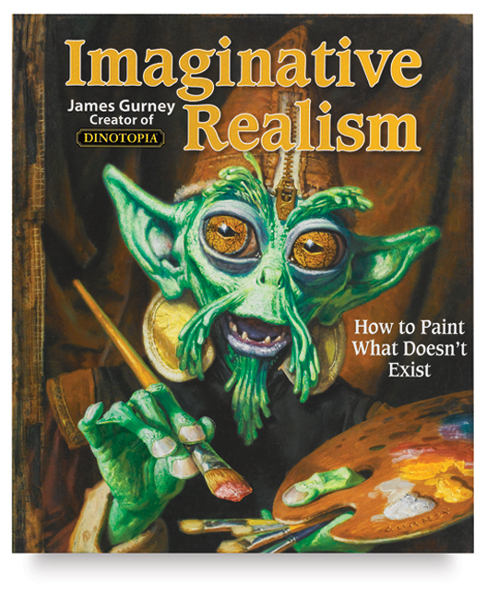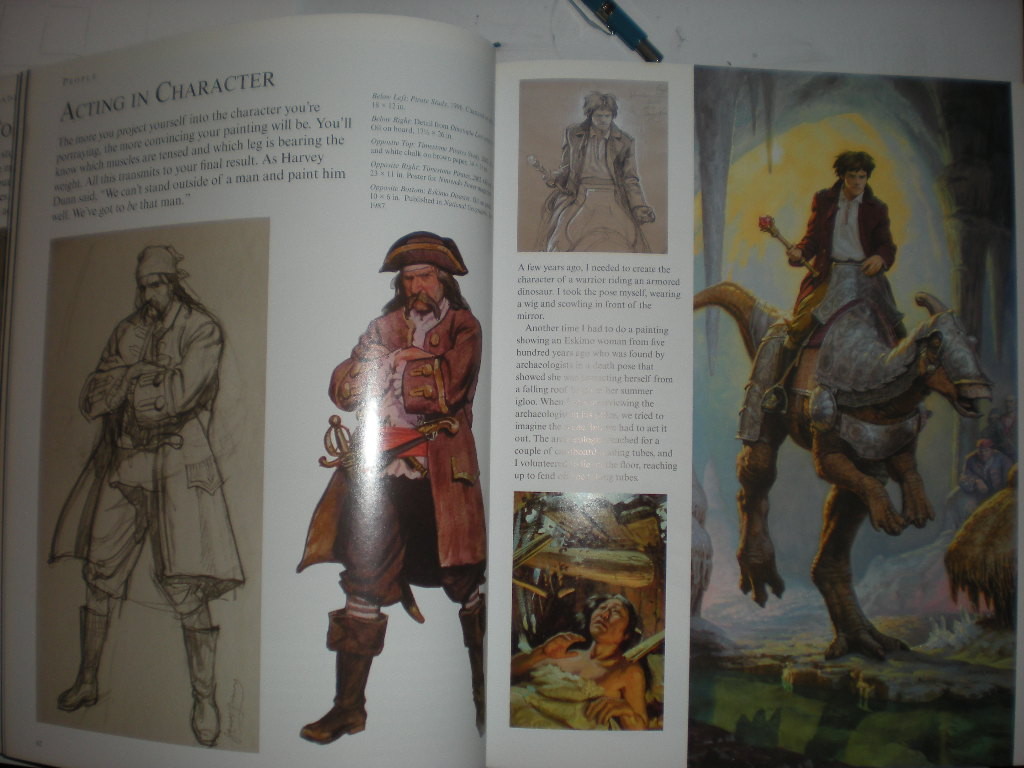Today, I’m reviewing the book by James Gurney titled Imaginative Realism: How To Paint What Doesn’t Exist.
Imaginative Realism: How to Paint What Doesn’t Exist. Kansas City: Andrews McMeel Pub, 2009
(Above image courtesy of Dick Blick, famous art supplies store)
James Gurney is a famous illustrator who paints in a realistic manner (a contrast to my own simple story). He’s the creator of Dinotopia and was the guest of honor at Anthrocon 2010. I had the honor of meeting him in person at that event! I sat in on all of his panels where he talked about his work, his technique and his experiences like working with the legendary Frank Frazetta. That same year, I picked up a copy of this book of his from Strand Books for cheap; it was worth every penny because I consult it regularly.
Imaginative Realism isn’t a standard “how to draw” or “how to paint” guide. Rather than show step-by-step techniques of “this is how you draw a dinosaur” or “draw a superhero like this”, he explains various concepts with plenty of text and supporting images. The book itself is divided into various chapters including: tradition, tools for your studio, preliminary work, history & archaeology, people, dinosaurs, creatures & aliens, architecture, vehicles, plein-air, composition, working procedure and an overview of careers in the field of commercial art (book covers, movie design and so on).
This interior page view is one example of what Gurney’s book is all about. He explains the concepts I mentioned above and breaks them down not only with text explaining them (doing preparatory sketches, making value studies, taking photographs for reference, etc) but also with pictures consisting of finished art, sketches, photos and other such images to explain them. He also talks about some concepts that illustrators nowadays may be reluctant to do such as building models or researching costumes. While today’s fast-paced world has us artists working on tighter deadlines and having to deal with a demanding audience, the use of maquettes, construction of models or careful research of costumes can be a boon to your art.
Gurney knows what he’s talking about; I not only talk from personal experience (having met him at Anthrocon 2010) but also from how beneficial the book has been to me. I’ve used more photo reference, more concept sketches and more careful research in my own comics.
The only downside with Gurney’s text is the concepts are more advanced. If you are an absolute beginner or a novice in drawing, this book is NOT for you as it won’t teach you basic techniques. You’ll have to have some skill with drawing and possibly with art in general (design, color, painting and so on) before being able to benefit from this book.
Other than that, Gurney’s Imaginative Realism is a winner. This is a book that every artist should have on their shelves, especially if you paint in a realistic manner!


